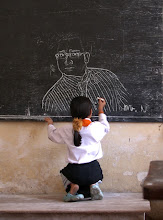Visual-spatial learners learn best by seeing and watching as he/she thinks primarily in pictures and relates well to the space surrounding them. While they are able to more easily see the big picture, small details may be missed. Visual-spatial learners read maps well, but struggle with oral directions - which explains why they have such a difficult time listening to speeches from a speaker. These learners do better when they can see a task being preformed rather than just listening to the directions on how to perform it. It is very helpful to show visual-spatial learners an example of the completed project or the desired outcome.
With regard to spelling, visual-spatial learners learn whole words easily and don’t respond as well to phonics-based strategies. They must visualize words to spell them instead of sounding them out. The visual-spatial learner usually writes messily and will prefer keyboarding. They have a tendency to develop their own methods of problem solving and dislike showing steps used to arrive at a solution as solutions are reached intuitively.
Visual-spatial students prefer giving illustrations of the information that they learn. Graphs, charts, handouts that offer stimulating pictures, colors, and visual props appeal to them. Visual stimulation is very important to visual learners. Because of their propensity toward disorganization, it comes as no surprise that visual learners may feel the need to create lists or organizers to keep them focused and on-track.
http://education.families.com/blog/characteristics-of-visual-learners
Subscribe to:
Post Comments (Atom)

No comments:
Post a Comment